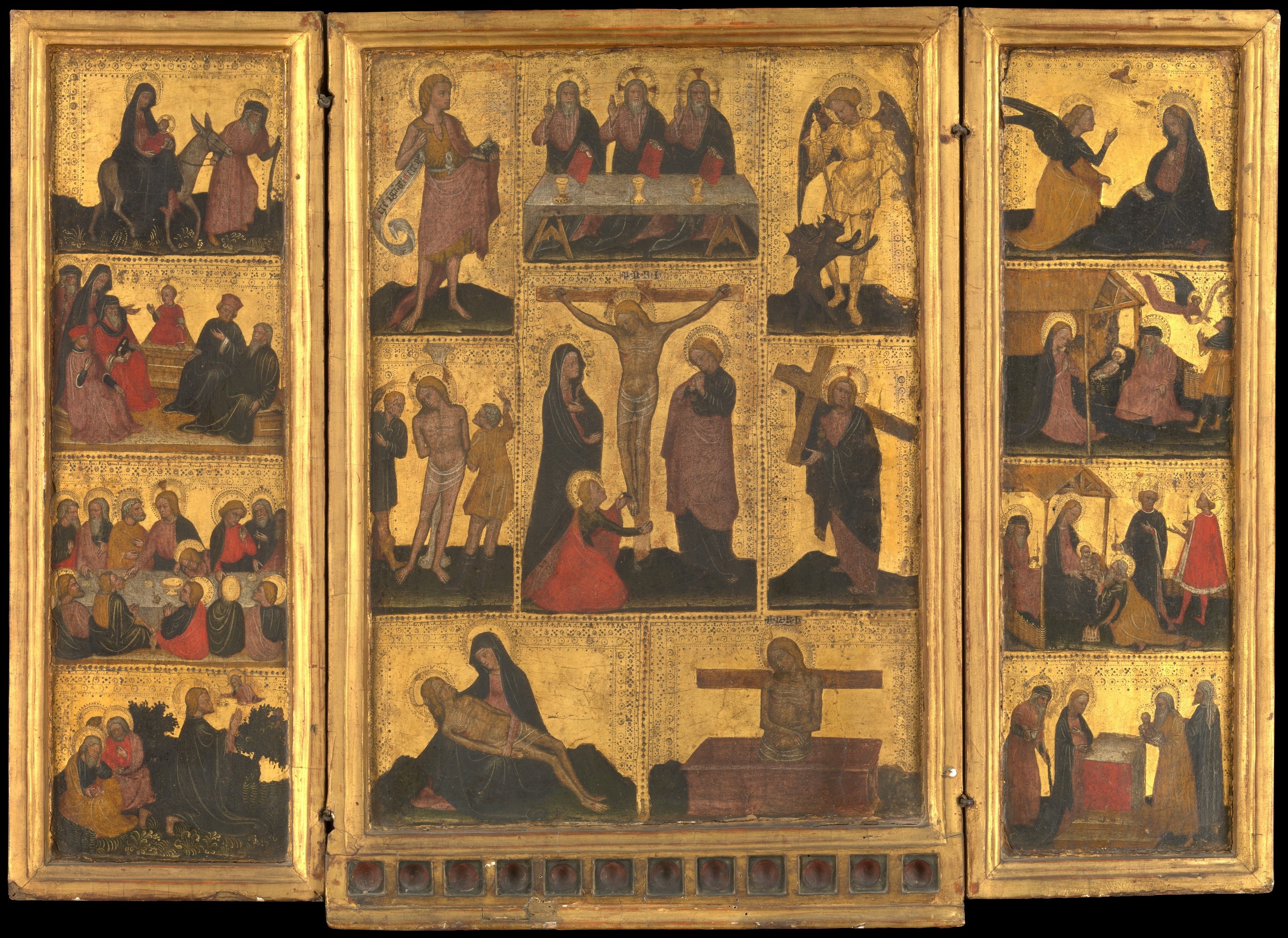Franceschino Zavattari belonged to an Italian family of painters. The earliest member of the family documented as a painter was Cristoforo (di Francesco) Zavattari (active 1404-1409 in Milan). Members of the family continued to work as painters in Lombardy until the mid-16th century.
In 1404 Cristoforo was employed by the works of Milan Cathedral to examine and assess the value of stained-glass windows executed by Niccolò da Venezia (active 1391-1415); in 1409 he gilded a capital destined for one of the pilasters in the cathedral's apse and several other figures.
In February 1417 Cristoforo's son, Franceschino (di Cristoforo) Zavattari (active 1414-1453 in Milan), was employed by the cathedral deputies to design and paint a large number of stained-glass windows, illustrating New Testament scenes; although he began work on the windows and was paid for what he did, nine months later the project was given to Maffiolo da Cremona for completion. However, the activity of Franceschino in the production of stained-glass windows of the cathedral of Milan is documented from 1417 until 1453. Frescoes in the Palazzo Borromeo are attributed to Franceschino.
Franceschino had three sons, Giovanni (active c. 1441-1481), Gregorio (documented in Milan and Pavia, 1453-1481), and Ambrogio (documented in Milan and Pavia, 1450-1481). They created the masterpiece of the family in the tomb chapel of Queen Theodolinda in the cathedral of Monza (1441.46). After the Monza frescoes, Franceschino with Gregorio and Ambrogio worked at the Certosa di Pavia.
The sons of Giovanni, Franceschino II, Vincenzo, Giangiacomo and Guidone concluded the dynasty.
VIDEO: Francesco da Milano: Il divino - Theodolinda Chapel Monza

 Foundation Musick's Monument
Foundation Musick's Monument